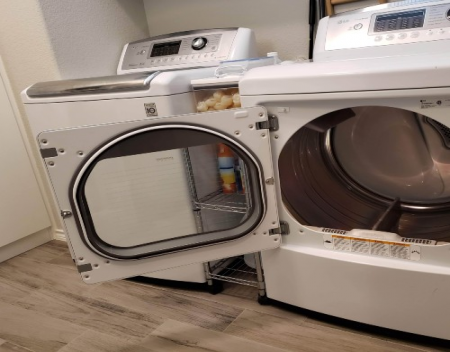Tipos de aparatos
- Aire acondicionado
- Automobile
- Chainsaw
- Circular Saw
- Lavaplatos
- Drills
- Secadora
- Drywall Screw Gun
- Horno
- Gas Fireplace
- Gas Grill
- Gas Patio Heater
- Grinder
- Heat Pump
- Impact Driver
- Impact Wrench
- Microonda
- Nailer
- Orbital Sander
- Calentadores de piscina
- Powerwall
- Distancia
- Refrigerador
- Television
- Lavadora
- Calentador de agua
Marcas de electrodomésticos
- A.O. Smith
- AccuCold
- Admiral Craft
- AGA
- Airrex
- Amana
- Ambiance
- American Range
- American Standard
- American Water Heaters
- Aquacal
- Armstrong
- Asko
- Avanti
- Avenlur
- Azure
- Beko
- Bellfires
- Bertazzoni
- Blackstone
- Blaze
- Blomberg
- BlueStar
- Bosch
- Bradford White
- Bromic
- Bryant
- Cafe
- Calcana
- Capital
- Carrier
- Char-Broil
- Char-Griller
- Chrysler
- Coates
- Coleman
- Comfortmaker
- Commercial Chef
- Continental
- Cosmo
- Cove
- Crown Verity
- Dacor
- Daikin
- Danby
- Danfoss
- DaVinci
- DCS
- Deco
- DeWALT
- Ducane
- Dyna-Glo
- Dyson
- EcoSmart
- Electrolux
- Element4
- Empava
- Equator
- Eurodib
- European Home
- Everdure
- Farberware
- Fhiaba
- FibroPool
- Fire Sense
- Fisher
- FiveStar
- Flare
- Flash Furniture
- Focus
- Ford
- Forno
- Forte
- Frigidaire
- Fulgor Milano
- Gaggenau
- GE
- General Motors
- GlowBrand
- Goodman
- Grundig
- GSW
- Haier
- Hayward
- Heatstar
- Heil
- Hestan
- Hisense
- Hitachi
- Hotpoint
- iio
- Ilve
- Impecca
- Ingignia
- Insignia
- JennAir
- John Wood
- Keeprite
- Kenmore
- Kenyon
- KitchenAid
- Kucht
- La Cornue
- Lennox
- LG
- Liebherr
- Lifetime
- Lion
- Luxaire
- Lynx
- Magic Chef
- Marvel
- Maytag
- McQuay
- MicroFridge
- Midea
- Miele
- Migali
- Monogram
- Montigo
- Mr Heater
- Napoleon
- Navien
- Nexgrill
- Noritz
- Panasonic
- Patio Comforts
- Payne
- Pentair
- Perlick
- PITT
- Premier
- Raypak
- Real Fyre
- Regency
- Reliance
- Rheem
- Rinnai
- Roma
- Ruud
- Saber
- Samsung
- Schwank
- Sharp
- Smeg
- Solas
- Sony
- Spartherm
- Speed Queen
- StaRite
- State Water Heaters
- Stiebel Eltron
- SubZero
- Summerset
- Summit
- SunGlo
- SunPak
- Sunpentown
- SunStar
- Superiore
- Takagi
- TCL
- TEC
- Tempstar
- Tesla
- Thermador
- Thor Kitchen
- Toshiba
- Town and Country
- Toyota
- Traeger
- Trane
- Twin Eagles
- U-Line
- Unique
- Vaillant Group
- Valor
- Verona
- Victory
- Viessmann
- Viking
- Vizio
- Weber
- Westinghouse
- Whirlpool
- Whynter
- York
- ZLINE
Categorías de artículos
- Aire Acondicionado
- Cuidado de los electrodomesticos
- Appliance News
- Dishwasher News
- Maquinas de secado
- Hornos
- Gas Fireplaces
- Microondas
- Calentadores de piscina
- Frigorificos
- Estufas - Cocinas
- Trucos y consejos
- Lavadoras
- Water Heaters
Más artículos
LG Dryer overheating

LG Dryer overheating.
Heating Element.
The heating element warms the air before the air enters the dryer drum. If the element is partially shorted out, it may produce heat continuously, even if the dryer has reached the proper temperature. When this happens, the dryer gets too hot. To determine if the heating element is at fault, use a multimeter to test each terminal for continuity to the case. If the heating element has continuity to the case, it is shorted out. If the heating element is shorted out, replace it.
Heating Element Assembly.
The heating element warms the air as it passes over the element. If the element is partially shorted out, it may produce heat continuously, even if the dryer has reached the proper temperature. When this happens, the dryer gets too hot. To determine if the heating element is at fault, first use a multimeter to test the heating element for continuity. If the heating element does not have continuity, replace it. Next, test for continuity from each terminal to the case. If the heating element has continuity to the case, it is shorted out. If the heating element is shorted out, replace it.
Air Flow Problem.
If the vent is clogged or partially clogged, it will restrict the airflow through the dryer, substantially increasing the drying time. To ensure proper dryer performance, you should clean your dryer’s venting system at least once per year.
Cycling Thermostat.
The cycling thermostat cycles the heat on and off to maintain the proper air temperature. If the thermostat is defective, it may keep the heat on too long, causing the dryer to get too hot. However, this is rarely the case. Before replacing the cycling thermostat check all the more commonly defective parts. If you have determined that all of the other components are working properly, test the thermostat by using a multimeter to test it for continuity. If the thermostat does not have continuity, replace it.
Felt Seal.
Most dryers have a felt seal at the front and rear of the drum to prevent heat from escaping the drum. If the seal is worn out or missing, the heat will not be drawn through the drum properly, causing the dryer to get too hot. Check the drum seal to ensure that it is creating a reliable seal around the drum. However, this is rarely the case. Before replacing the felt seal check all the more commonly defective parts. If you have determined that all of the other components are working properly, replace the felt seal.
Blower Wheel.
The blower wheel works with the drive motor to draw air into the dryer drum. Clumps of lint, socks and small articles of clothing can escape the lint filter and get caught in the blower wheel. In addition, the blower wheel sleeve can wear out, allowing the blower wheel to wobble on the motor shaft. If the blower wheel is obstructed or defective, the dryer may get too hot. To determine if the blower wheel is working properly, remove the dryer vent and assess the strength of the airflow. If the airflow is weak, check the blower wheel for obstructions. If no obstructions are present, try rotating the blower wheel by hand. If the blower wheel wobbles as it turns, replace it.
SOURCE: repairclinic.com

LG Dryer overheating.
Heating Element.
The heating element warms the air before the air enters the dryer drum. If the element is partially shorted out, it may produce heat continuously, even if the dryer has reached the proper temperature. When this happens, the dryer gets too hot. To determine if the heating element is at fault, use a multimeter to test each terminal for continuity to the case. If the heating element has continuity to the case, it is shorted out. If the heating element is shorted out, replace it.
Heating Element Assembly.
The heating element warms the air as it passes over the element. If the element is partially shorted out, it may produce heat continuously, even if the dryer has reached the proper temperature. When this happens, the dryer gets too hot. To determine if the heating element is at fault, first use a multimeter to test the heating element for continuity. If the heating element does not have continuity, replace it. Next, test for continuity from each terminal to the case. If the heating element has continuity to the case, it is shorted out. If the heating element is shorted out, replace it.
Air Flow Problem.
If the vent is clogged or partially clogged, it will restrict the airflow through the dryer, substantially increasing the drying time. To ensure proper dryer performance, you should clean your dryer’s venting system at least once per year.
Cycling Thermostat.
The cycling thermostat cycles the heat on and off to maintain the proper air temperature. If the thermostat is defective, it may keep the heat on too long, causing the dryer to get too hot. However, this is rarely the case. Before replacing the cycling thermostat check all the more commonly defective parts. If you have determined that all of the other components are working properly, test the thermostat by using a multimeter to test it for continuity. If the thermostat does not have continuity, replace it.
Felt Seal.
Most dryers have a felt seal at the front and rear of the drum to prevent heat from escaping the drum. If the seal is worn out or missing, the heat will not be drawn through the drum properly, causing the dryer to get too hot. Check the drum seal to ensure that it is creating a reliable seal around the drum. However, this is rarely the case. Before replacing the felt seal check all the more commonly defective parts. If you have determined that all of the other components are working properly, replace the felt seal.
Blower Wheel.
The blower wheel works with the drive motor to draw air into the dryer drum. Clumps of lint, socks and small articles of clothing can escape the lint filter and get caught in the blower wheel. In addition, the blower wheel sleeve can wear out, allowing the blower wheel to wobble on the motor shaft. If the blower wheel is obstructed or defective, the dryer may get too hot. To determine if the blower wheel is working properly, remove the dryer vent and assess the strength of the airflow. If the airflow is weak, check the blower wheel for obstructions. If no obstructions are present, try rotating the blower wheel by hand. If the blower wheel wobbles as it turns, replace it.
SOURCE: repairclinic.com




